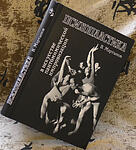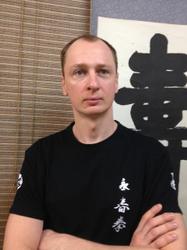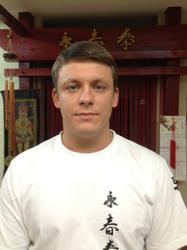The Master Te Kong branch of Wing Chun
Master Yuen Chai Wan (Nguyen Te Kong) branch of Wing Chun
 This version of Yun Chun Quen history is thus: it was passed down from the Vietnamese Tkheu Lam Fat Son branch. This version doesn’t claim to be complete and exclusively authentic. Over the centuries it is very hard to get a precise historical picture. In old China official recordings of one or another Gun Fu style were not always kept. More often than not the information was passed orally from one generation to another. As time passes by, the historical accounts gather new details transforming them into legends. Yun Chun Quen is no exception. Nearly three hundred years of South China Gun Fu history bulging at the seams with mystery and secrets. Nowadays the following is claimed:
This version of Yun Chun Quen history is thus: it was passed down from the Vietnamese Tkheu Lam Fat Son branch. This version doesn’t claim to be complete and exclusively authentic. Over the centuries it is very hard to get a precise historical picture. In old China official recordings of one or another Gun Fu style were not always kept. More often than not the information was passed orally from one generation to another. As time passes by, the historical accounts gather new details transforming them into legends. Yun Chun Quen is no exception. Nearly three hundred years of South China Gun Fu history bulging at the seams with mystery and secrets. Nowadays the following is claimed:
- Yun Chun Quen was established in the middle of the 18th Century in the South Chinese Empire.
- Dramatic accounts of the Shaolin Temple (Syu Lam) siege and its burning by Emperor’s Army of Tsin. The Manchu Dynasty recorded these events which documented the origin of Wing Chun.
There are currently many versions of the origin of Wing Chun Quen. There are slight differences in factual interpretations and reading variations. Most researchers agree that the legendary nun, Ng Mui (Five Plums), was at the origin of the martial arts style. Her earthly name was Lu Sei Leung (Lu Sinyan).
Five ancestors
 (in the photo: Do Tuan, Chan Van Fung, Chin Kuok Din, Mai An Chau). The traditions of most martial schools of the South of China mention the fact that, after the Foshan Shaolin Temple’s destruction, five people became known in the southern provinces. Each of them created their own Gun Fu style, based on the Shaolin art (originally this art consisted of many styles). The five were supposedly the most skilled Shaolin Masters, and were part of an elite group elaborating and perfecting the fighting style. The following people are usually named:
(in the photo: Do Tuan, Chan Van Fung, Chin Kuok Din, Mai An Chau). The traditions of most martial schools of the South of China mention the fact that, after the Foshan Shaolin Temple’s destruction, five people became known in the southern provinces. Each of them created their own Gun Fu style, based on the Shaolin art (originally this art consisted of many styles). The five were supposedly the most skilled Shaolin Masters, and were part of an elite group elaborating and perfecting the fighting style. The following people are usually named:
- Ng Mui
- Chzhi Shim Sym Sy, Chan’s teacher, Reach Goodness, Good Will’
- Bac Mei Dao Zhen, Dao White Blood’
- Miu Hin
- Fung Do Dak
Chzhi Shim taught students the Ven Chun Kuen (Fist of Eternal Spring) style. He named his style after the Shaolin Temple of Eternal Spring, Ven Chun Tong, where he taught martial arts and where his work on a new fighting system began. Under his influence, the Hun Ga Kuen, Fist of Hun (Red) Family was created. Miu Hin taught his followers the Five Forms system, also known as a Fist of Five Animals. Fung Do Dak used to be a Taoist before he arrived at Shaolin. After the defeat and burning of the temple, he hid in a Taoist Monastery in the Udan mountains in the Hubei province. There he taught White Tiger and Nei Tszya Quan (Fist of Internal Family) styles. Bak Mei Dao Zhen (Dao White Brow) was an outstanding Gun Fu Master. Having arrived to Shaolin by Bak Mei’s prior invitation, he was approached by many Shaolin fighters wishing to test his skills. They were all beaten by this Tao. Bak Mei lived in Shaolin for a long time. After the Temple defeat, he returned to the Emei mountains and, from there, back to Shaolin. He taught the Fist of Tiger’ form at the Tao monastery. After his death, his followers renamed the style Form of the White Brow’, in memory of their past Master, Bak Mei Pai. The nun, Ng Mui, is a link between the Shaolin Gun-Fu and Yun Chun Quen forms. She created Bak Hok Quen ( White Crane Fist’). Ng Mui taught her followers a method which became the basis for the creation and development of other Gun Fu forms:
- Dragon Fist
- Plum Flower Fist
- Five Plums Fist
- Five Animals Fist…etc.
based on www.tekong.net





 Коан – вопрос к членам Федерации Юн Чун Цюань от президента В.В. Мартынова: «Что Вы сделали для Федерации из того, что не мог бы сделать любой другой за деньги?»
Коан – вопрос к членам Федерации Юн Чун Цюань от президента В.В. Мартынова: «Что Вы сделали для Федерации из того, что не мог бы сделать любой другой за деньги?»


